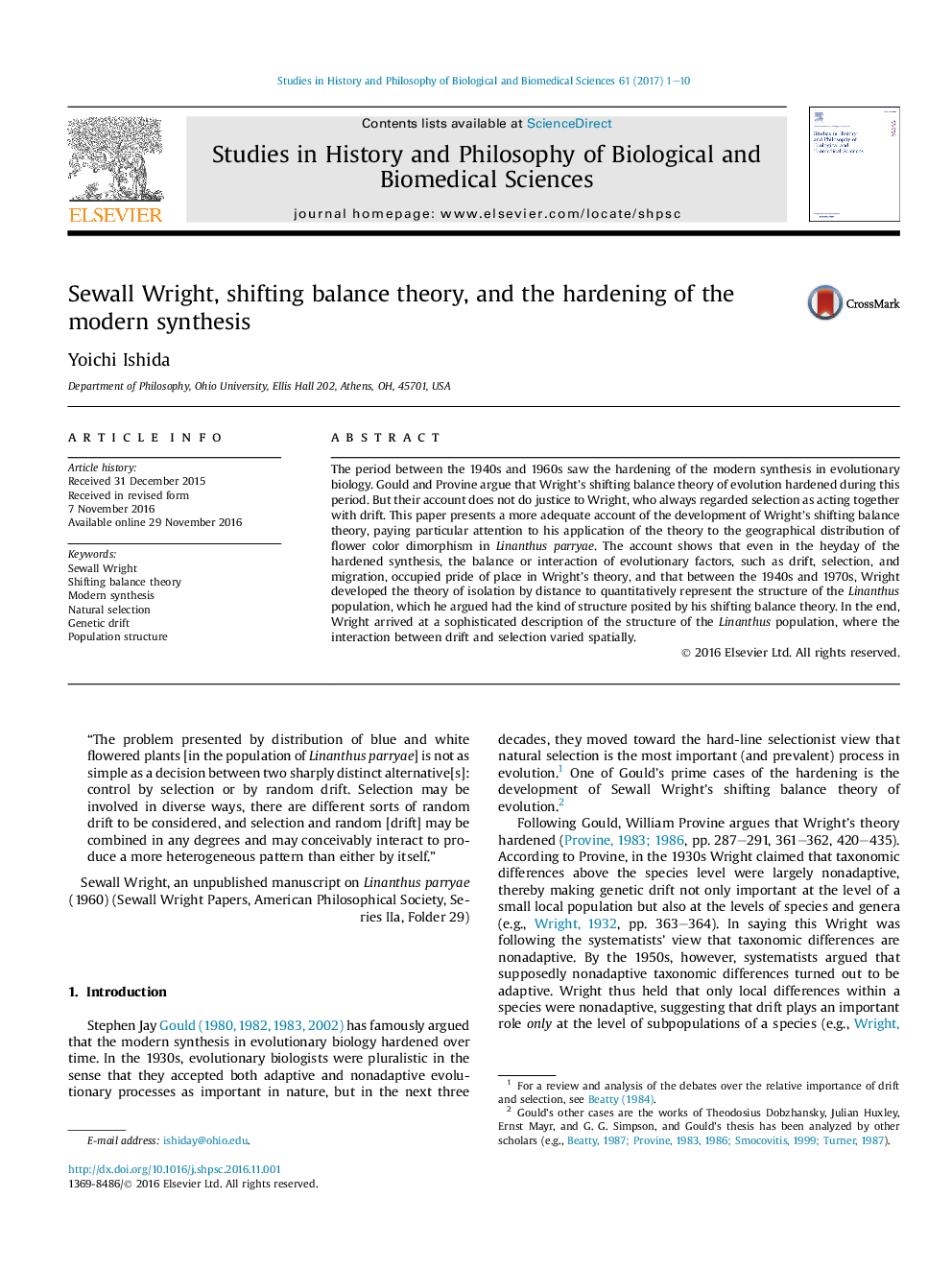| Article ID | Journal | Published Year | Pages | File Type |
|---|---|---|---|---|
| 5130545 | Studies in History and Philosophy of Science Part C: Studies in History and Philosophy of Biological and Biomedical Sciences | 2017 | 10 Pages |
â¢The hardening interpretation of Wright's shifting balance theory is criticized.â¢A more adequate account of the development of Wright's theory is presented.â¢The archival materials on Sewall Wright's work on Linanthus parryae are examined.â¢Wright's manuscripts from the 1960s criticize the hardened modern synthesis.â¢The change in Wright's assumptions about population structure is clarified.
The period between the 1940s and 1960s saw the hardening of the modern synthesis in evolutionary biology. Gould and Provine argue that Wright's shifting balance theory of evolution hardened during this period. But their account does not do justice to Wright, who always regarded selection as acting together with drift. This paper presents a more adequate account of the development of Wright's shifting balance theory, paying particular attention to his application of the theory to the geographical distribution of flower color dimorphism in Linanthus parryae. The account shows that even in the heyday of the hardened synthesis, the balance or interaction of evolutionary factors, such as drift, selection, and migration, occupied pride of place in Wright's theory, and that between the 1940s and 1970s, Wright developed the theory of isolation by distance to quantitatively represent the structure of the Linanthus population, which he argued had the kind of structure posited by his shifting balance theory. In the end, Wright arrived at a sophisticated description of the structure of the Linanthus population, where the interaction between drift and selection varied spatially.
